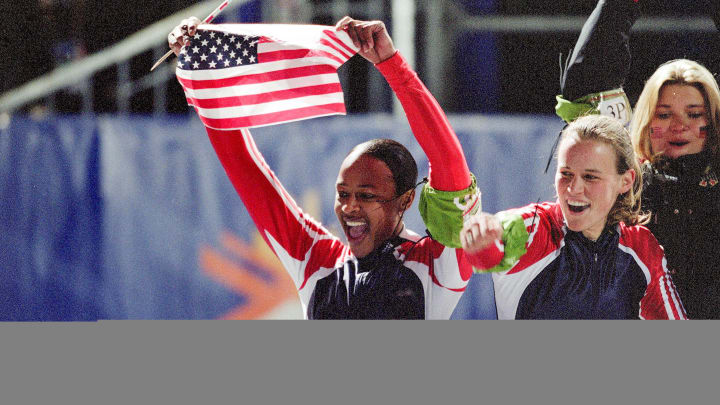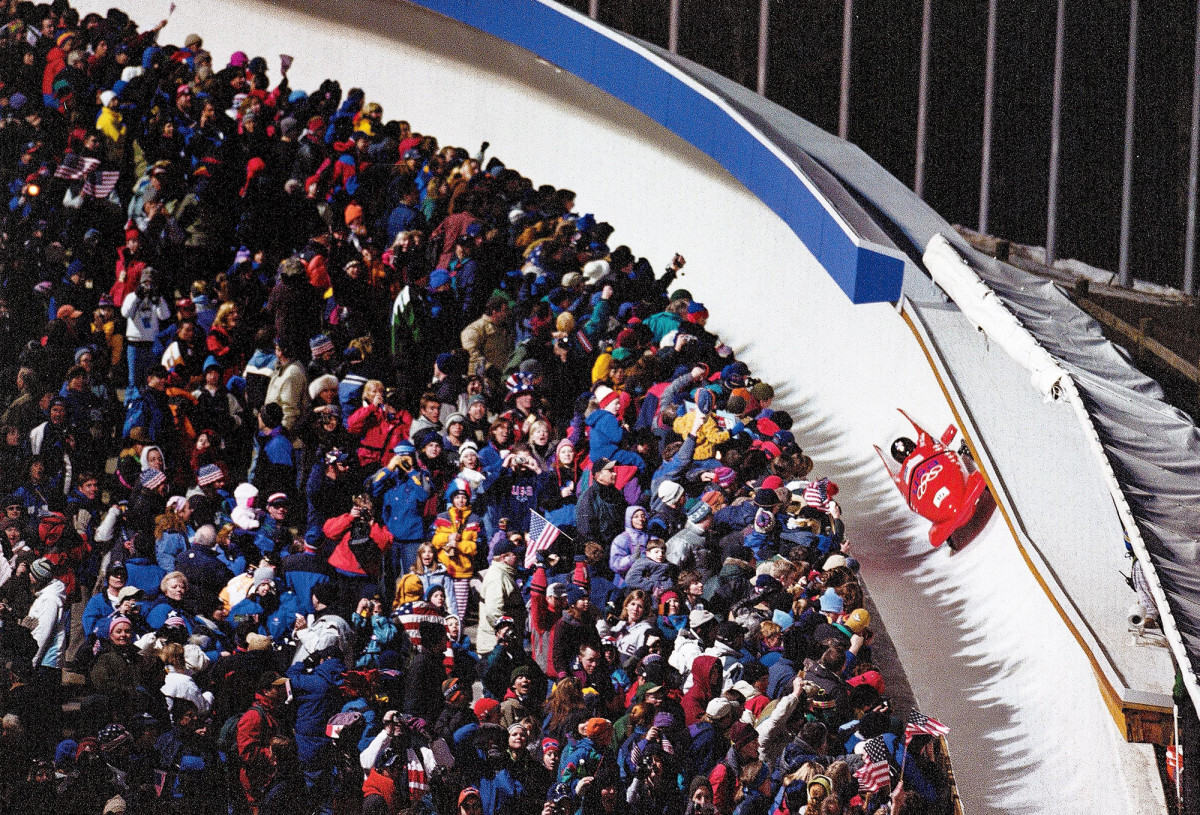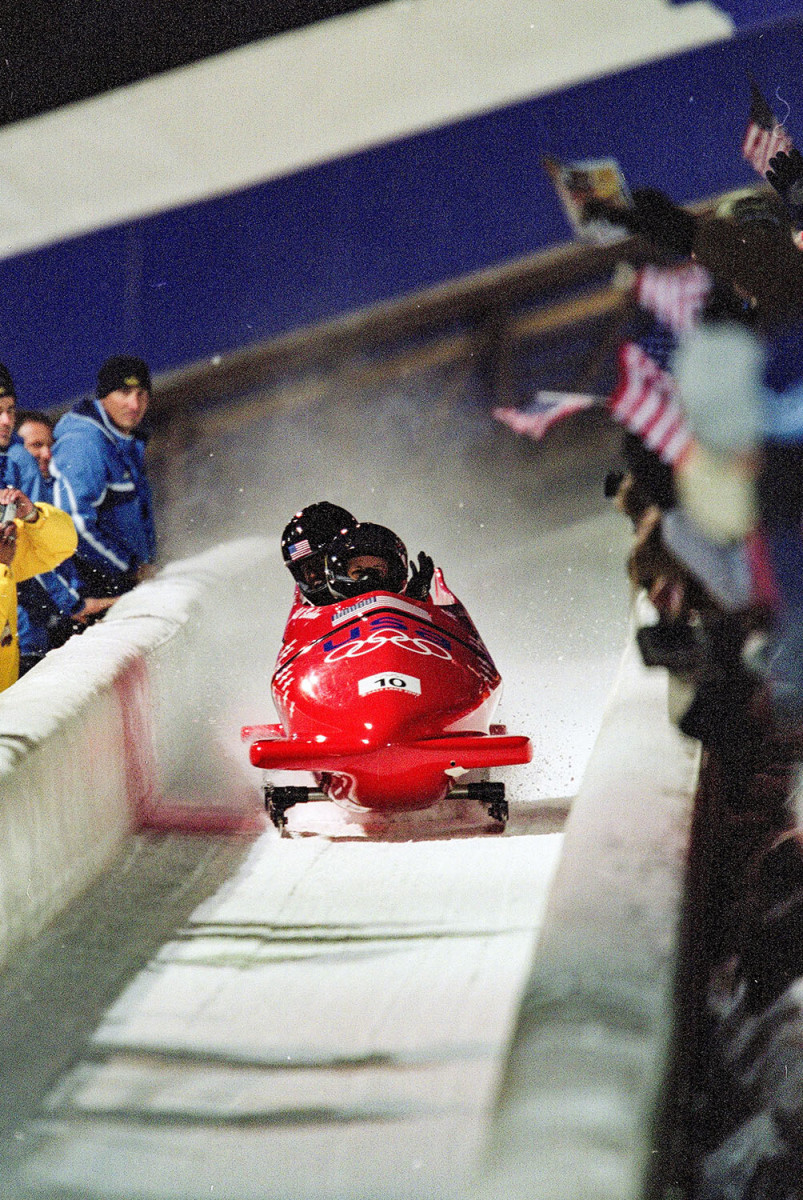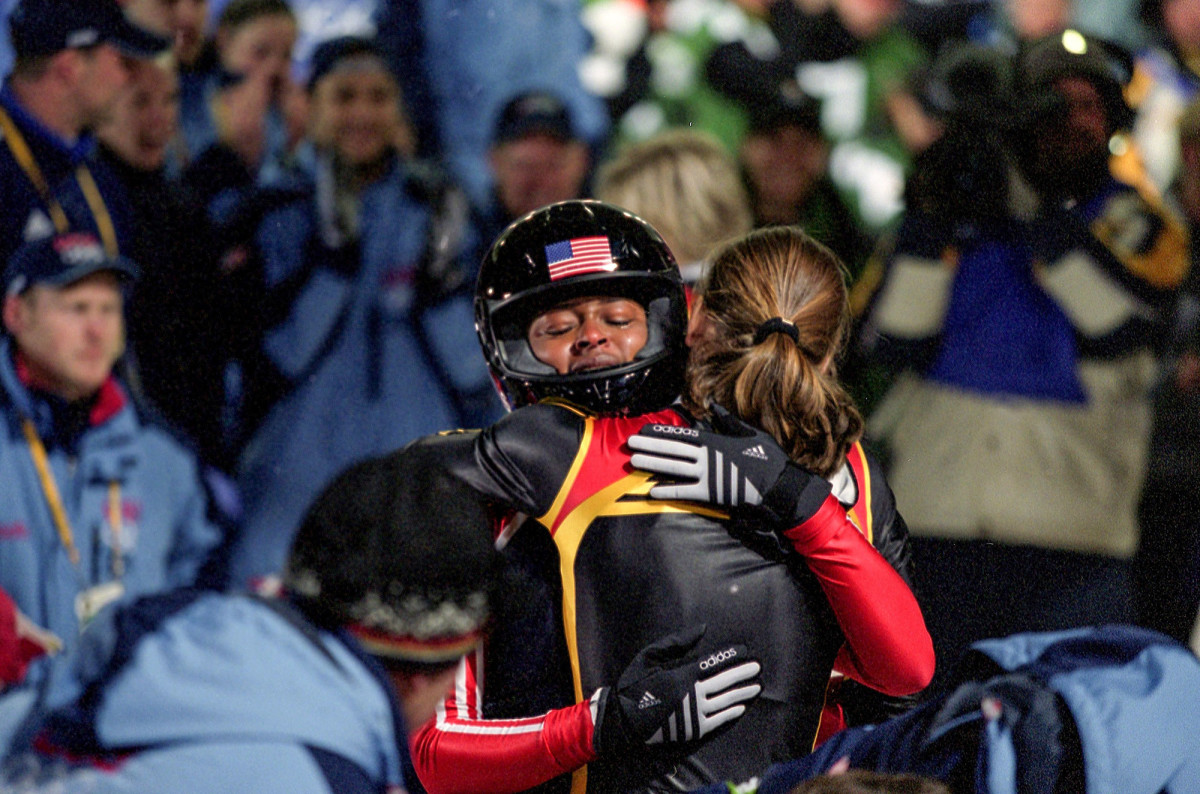Running on Ice

In honor of Black History Month, Sports Illustrated is passing the pen to prominent Black voices across sports to reflect, re-examine legacies and share their stories and viewpoints on what lies ahead for the next generation of trailblazers.
Many people in life have specific goals and dreams of what they want to be when they grow up. In school, sometimes we get conditioned to think about the jobs that we see in our community or those that are prominent on TV. We think and look inside our bubble for those things that are common. Most of my friends talked about being teachers, lawyers, doctors, athletes, police officers or joining the military. But my goal was a little different. I wanted to represent my country in the Olympics.
At the age of 9, I knew that I wanted to achieve greatness in track and field. The seed of that greatness—working hard and the love of my country—was instilled in me by my childhood coach Dewitt Thomas at an early age. I wanted to be an Olympian. I wanted to stand on the highest podium, sing the national anthem and listen to the crowd cheer U-S-A, U-S-A, U-S-A! I didn’t want or imagine doing anything else. I had a singular focus, and I boldly chased that dream my entire life.

I grew up in a predominantly Black neighborhood in Birmingham. I think there was one white student in the entire school. Sports is where I found diversity. It was literally the only time in life when I spent any significant amount of time around people who didn’t look like me. Growing up in Birmingham, it was obvious that the city was still segregated. Most of the people who lived “over the mountain” were white and the majority of Black people lived in or on the outskirts of the inner city. I grew up under the shadow of bombings in Birmingham, the riots, Martin Luther King Jr.’s “Letter from Birmingham Jail,” the negative publicity and our place in history. But on the track, we were all equal.
We were equal in the sense that the clock didn’t discriminate based on color. But it was clear the majority of successful sprinters and long jumpers were Black, and the majority of successful distance runners were white. But there was still mutual respect for all who competed. And it was on the track where I quickly learned that talent alone is not enough to make your dreams a reality. It’s simply the entry fee that one must possess to become a champion.
“My purpose was to leave my permanent footsteps in the snow for others to follow.”
My dreams took me all the way to the 1996 U.S. Olympic Trials in Atlanta and the 2000 U.S. Olympic Trials in Sacramento, where I competed in the 100 meters and the long jump. Unfortunately, leading up to the trials, I was coming off major surgeries and I wasn’t able to compete at my best. The trials taught me a lot about myself and helped me realize the truth of chasing a childhood goal. The dream doesn’t always come true, but winners will always find a way to win. I achieved a lot of success in track and field over the years, but the ultimate goal wasn’t to win conference championships in college or be recognized as one of the best in the U.S. I wanted to be the best. But it seemed that every time I had the opportunity to show the world that I was ready—I wasn’t physically ready.
Unfortunately, there came a time in my life when I felt like it was time for me to quit. I quit chasing that dream of being an Olympian, and I knew it was time for me to close that chapter in my life. Although hard to swallow, I knew it was time to hang up my track spikes and focus on starting a family.
Luck, fate or divine intervention—whatever you want to label it—came into play when the bobsled gods placed a flier on an obscure wall inviting summer athletes to continue their pursuit of being an Olympian, and my husband, Johnny, saw it as an opportunity for me to live out my dream. At first, we joked about it and laughed at the thought of being a bobsledder because our knowledge of bobsled was derived from John Candy and the movie Cool Runnings. I had never watched the U.S. compete, and I didn’t know anything about the women’s program, but I thought I would give it a try.

Two days later, I arrived at the tryouts with the weight of failure, disappointment and confusion about my future swirling in my mind. My husband also wanted to try out for the team. As we walked on the track, he laced up his newly purchased spikes, and I looked at him and told him: I’m not going to do this. Johnny was a college football and track athlete, so he thought that he was in decent shape, but about 20 minutes into the tryouts, he pulled his hamstring. He looked at me and said, “Now you have to live out the family dream.” I laced up my spikes, and I took my first step as a bobsledder. I know this may sound like a Disney movie, but my life was changed forever based on a little luck, my ability to cross over, hard work and great teammates.
Eventually, at the 2002 Games in Salt Lake City in the two-woman bobsled event, I became the first Black athlete from any country to win a gold medal in the Winter Olympics.

It’s easy for a kid to participate in track, basketball, football and even baseball on a local level. But if you think about minorities participating in winter sports, you realize that minority representation is much lower. One of the main reasons is that there’s a huge barrier to entry that often gets overlooked: cost. It’s a major factor because most of the training for winter sports takes place in locations where the affluent live. If you think of bobsled, for example, there are only two spots in the U.S. where athletes can train: Lake Placid and Salt Lake City. Both training centers are located in ski towns. How can a person from the inner city or the Deep South afford to send their son or daughter to these places? It’s tough. I’d love to work on a team to help increase inclusion and diversity across all sports and secure sponsorship for promising athletes who truly can’t afford these opportunities.
Being Black didn’t prevent me from competing in the Winter Olympics, but I grew up in Birmingham without a role model I could relate to. That’s why it’s important to have representation. In America, there’s a prevailing thought process of, “If I can see it, then I can achieve it.” That’s all well and good if you have a mentor, but what happens when you don’t? President Barack Obama didn’t have a role model and neither did I. We were the first. I’m in no way comparing what I did to his accomplishments, but I am giving you a parallel in that when you are the first, you are paving a way for others to follow. Unfortunately, there are times when Black athletes feel like they don’t belong because assumptions can be made. Sometimes a bias is formed based on a person’s appearance, but fortunately character is not defined based on a selfie.
Although the overall representation of Black athletes in the Winter Olympic Games is low, it’s great to see the increase in women’s bobsled and speedskating. Much of that is a direct relation to the fact that Elana Meyers Taylor has been extremely vocal, active in recruitment and successful on tour and in the Olympics. She is making a conscious effort to change the landscape of winter sports. I’m proud of the current movement, and I look forward to helping them create a path for the next generation.

The biggest growth that I’ve seen in the last 20 years is through corporate sponsorship for minorities. Companies like Comcast and Delta are raising the bar. They are using their commercials to tell a story of inclusion and diversity, and they are actively looking for athletes to support who embody the ideas of the Olympics and their corporate values. When the younger generation is able to see someone that looks like them then, they can expand their dreams and believe that the future is bright for everyone who is willing to work hard.
In my book, Running on Ice, I talk a lot about my faith. I’m quoted as saying, “If you can walk by faith, then you can run on ice.” I truly believe that we all have a purpose in life. My purpose was to leave my permanent footsteps in the snow for others to follow. As I look at the current makeup of the bobsled team in Beijing, where three of the four women are Black, I smile.
When I ran track, I didn’t think about being the next Black athlete to represent the U.S. I just wanted to represent the U.S. Although I didn’t focus on being Black as a Winter Olympian, I knew the stigma and stereotypes that existed. My focus was singular, and I knew that I could endure any racial issues that arose because my husband was also there with me. But what I realize even more so today than I did 20 years ago is that representation, diversity and inclusion matter. I’m fortunate to see so many Black athletes competing in this year’s Olympics, and I’m sure that the numbers across the board will continue to increase as long as a plan of action is implemented.
